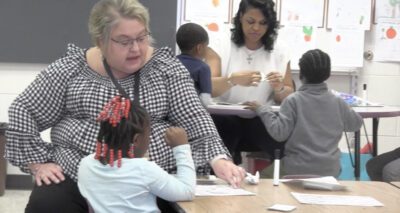Digital learning has gotten a bad rap, in some cases reasonably so, especially for the lack of results with disadvantaged learners. Meanwhile, alarms are sounding about the rise of online screen time co-timed with surges in anxiety, depression, suicide and insomnia among teens and young adults, here and abroad. While providers entice students with more game-like digital learning — possibly an extra blow to students’ mental health — parents are paying consultants substantial sums to reverse screen addiction.
Yet investment continues in online learning and digital tools. (Note: Neither Public Impact nor the authors invest in or provide digital learning tools.) That’s partly because there’s potential profit to be made, but there’s also a potential benefit for students: Digital tools can help meet each student’s learning needs, especially important for those whose needs are poorly met in traditional, one-size-fits-all classrooms and those who need non-traditional hours for learning.
So, what’s the missing killer app that could help digital learning tools fulfill their promise at large scale — for educators, students and digital providers — without ravaging students’ mental health?
The answer is old-school: human connection. Not just any connection, but well-orchestrated teamwork among adults teaching the same students.
Public Impact collaborated with the Clayton Christensen Institute in 2018 to examine eight examples of schools and school networks using blended learning plus any kind of non-traditional staffing model — and getting strong learning results. We can’t draw certain conclusions with just this number, but there was one commonality among all but one of them that’s different from most schools today.
What was it? Either a pair of teachers or a team of adults — some combination of teachers, assistants, residents, and a team leader — taught the same students and had regularly scheduled time to review student growth and discuss next steps together. Educators typically rotated through teaching small groups and individuals, allowing them to know students more personally.
The one model among the group with third-party research validation is the one our organization leads: Opportunity Culture. In an Opportunity Culture, a multi-classroom leader (MCL) leads a small teaching team, guiding, organizing, coaching and leading the team’s review of student learning data. We like the learning results, but they’re not the only good part: MCLs keep teaching students part of the time, and they (and some teammates) earn substantial pay supplements, within school budgets, making it feasible to scale up. Educators like it, too: 99 percent of MCLs and 88 percent of all staff want Opportunity Culture to continue in their schools.
Not all schools studied had all the features of Opportunity Culture schools, but all except one had multiple adults in differentiated roles teaching the same students, then collaborating to support them.
Digital tools played a key role for the teachers — in data. They told our interviewers that the tools made frequent reviews of data possible, about both what students know and their pace of progress, sortable across a grade or subject. That triggered conversations about why students were stalled or leaping ahead — answerable because the adults all knew the students — and how to help each student with next steps.
When multiple adults taught the same student, and the adults had time scheduled during school to collaborate, then digital data became a powerful tool for responding to each student’s needs. In some schools, substantial online learning helped capture that data. But in most of the schools, the data usually came from quick online assessments and entry of data about offline projects, papers, and skills practice; gathering it didn’t require massive screen time.
We’ve long thought that the adults leading learning would become more, not less, important as digital tools spread. But this was our first foray into testing that hypothesis across a range of staffing models.
If online learning and digital tool companies want a killer app to drive scale without damaging students, this is it: collaborative teaching by adults who have time to connect with the same students and with one another. Digital providers should be wooing schools already using team-based teaching — and advocating for more schools to make this transformation. It’s not simple, but it is possible. The many changes in budgets, schedules, roles, technology and other items must align. System leaders and principals must support the changes and back them up with high-standards, differentiation-ready curricula. Teachers must be a key part of the change, too, not bystanders.
Done right, strong teacher connections with teammates and students produce surges in student growth — and digital learning and tool providers in these schools may start to look worthy of the scale they want to achieve. Scaling human connection, not just screen time — the killer app we can all feel good about.
Recommended reading




